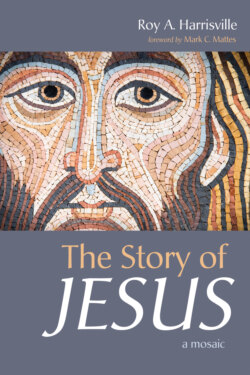Читать книгу The Story of Jesus - Roy A. Harrisville - Страница 5
На сайте Литреса книга снята с продажи.
Foreword
ОглавлениеOf the many questions that can be posed, asking who Jesus Christ is may be the most important. Even among the increasing number of “nones,” those who identify with no specific faith tradition, including atheists, agnostics, and a good many who are “spiritual but not religious,” Jesus as a teacher, ethical model, and martyr is held in high esteem. It is easy to give lip service to the importance of Jesus, but unless we investigate who he was, how will we know if our appreciation for him is justified?
Roy Harrisville, professor emeritus of New Testament at Luther Seminary and the author, editor, and translator of numerous books and articles, is one of America’s foremost scholars of the New Testament. For over eight decades he has reflected on the import of Jesus both for those who confess Jesus as Savior and those who do not.
This book succinctly and energetically gives us the results of Harrisville’s extensive lifetime of research. Harrisville meticulously and fearlessly walks us through what the four gospels tell us about Jesus, all so that we can come to an awareness of who Jesus is and what claim he may have on us. For many Christians, the Bible is taken as an authoritative source which provides proof texts of pure doctrine, its miracles are accepted at face value, and its stories are regarded as a stimulus for the practice of genuine piety. Harrisville is certainly aware of this stance, since he was raised in it. But he is just as much aware of the rise of “historical consciousness,” that is, the tendency among scholars to situate the Bible within history, with no privileged status, as one religious text among many. Such an historical consciousness, for instance, does not accept the miracles recorded in the Bible at face value, since they do not comport with the uniformity of experience that the natural sciences assume about the world. This approach to the Bible is far less apt to assume that the gospels are in harmony, instead highlights the differences between each.
Harrisville does not dismiss these concerns. In our current secular context, it would be intellectually dishonest to do so. Instead, he feels their full force, faces them fearlessly, brings them to the fore, and allows us to feel their weight. That said, he recognizes that the naturalistic assumptions embedded within this historicizing are not without bias. If the gospels are to be heard on their own terms, we find ourselves and our scientific bent challenged, particularly to the degree that we hold such a naturalistic bias against miracles and supernatural interventions. Harrisville provokes us to be “open to transcendence,” and unless we are, we will fail to understand Jesus on his own terms.
Harrisville describes his project as a wager. If Jesus proves not to be the Savior of the world, we will only be mistaken about history. But if Jesus in fact is the Savior, and we wager against that, then we lose out on his redemption. How we should wager can only be determined by our combing through the scope of Jesus’ life, teachings, ministry, and opposition to the political and religious leaders of his time. Indeed, the gospels are written from the standpoint of faith. But that does not disqualify them as historically accurate documents, because the early church was less inventive, and more receptive, of Jesus’ stories and sayings handed on by his earliest followers. We need not cede preference to skepticism about the overall portrayal of Jesus by the gospel authors. Such skepticism is mere bias against the proposal that God exists and that God intervenes in worldly affairs. If Jesus is the redeemer, such naturalistic bias is unjustified.
As he portrays Jesus’ life, teachings, death, and resurrection, what Harrisville shows us is that C.S. Lewis was quite accurate to describe Jesus’ life as a “true myth,” that is, that the events to which the gospels witness, scripted as they are within a narrative of redemption for the world, actually happened. Specifying this redemption, Harrisville does not understand Jesus apart from his willingness to die, not just as a martyr for the truth, but as a sacrifice, an act of love to expiate human sin. Such self-sacrifice on the part of Jesus effectuates nothing other than a “rupture” within God himself as Jesus takes on human trespasses. Thereby, Jesus’ own righteousness, not human sin, defines those who belong to Christ. As risen, Christ continuously and constantly grants such grace to sinners. In a word, God seeks to “win back” the world he has made.
In Harrisville’s work, Jesus is no unknown figure lost to us because we simply project our own ideals onto him, as Albert Schweitzer critiqued the attempt to describe Jesus’ life by scholars in his era. Instead, through carefully sifting through the gospels, examining divergencies in their portraiture of Jesus, and weighing their information in light of ancient Judaism and the various religious traditions of the ancient Roman empire, Jesus comes to light. As Jesus called people to discipleship so he still bids them follow him today. In Harrisville’s work we sense that Jesus calls you as well. We do well to heed his call!
Mark Mattes
Grand View University
Des Moines, Iowa
